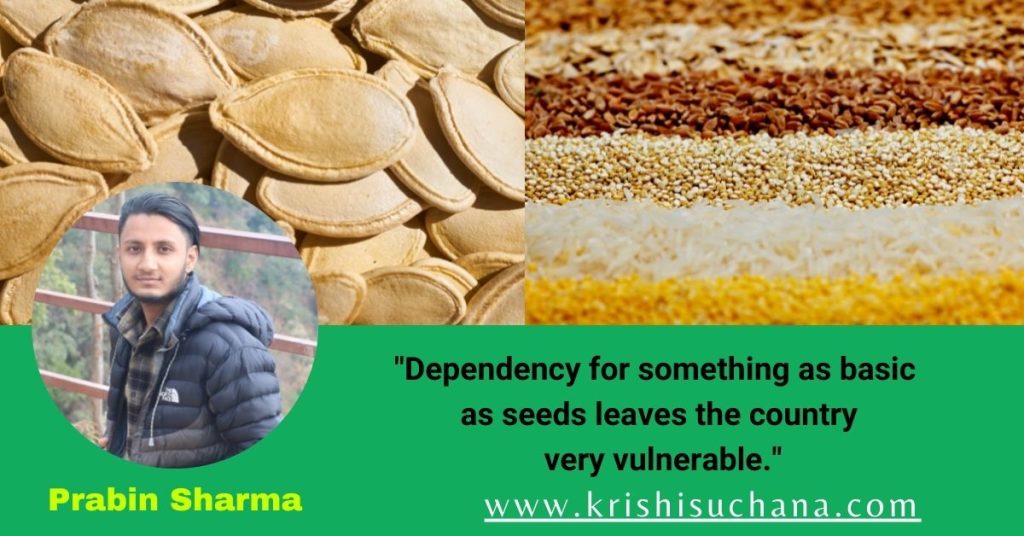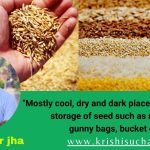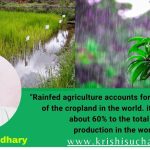Nepal’s reliance on imported hybrid seeds: Issue of concern in food and economic security

Quality seeds are critical in improving the potential yield output of the species and the variety as they ensure strong germination, rapid growth and robust development. The use of high quality seeds is one of the most important elements in increasing agricultural production in any farming system.
A majority of seeds used by farmers across Nepal for both grains and vegetables come from outside the country, and that’s not good news. Just three decades ago, a majority of Nepali farmers relied on local indigenous seeds. Even until the 90s, Nepal was a seed exporting country. Today, according to agriculture scientists, more than 90 percent of vegetable seeds employed in the country are imported. Nearly 30 percent of maize seeds are imported, and around 15 percent of rice seeds are from other countries.
As the number of vegetables and grains grown from imported hybrid seeds increases every year, scientists warn that this reliance on imports for something as sensitive to food security as seeds could have devastating consequences for the country’s agriculture sector—and for the genetic diversity of indigenous plants.
Findings show that in the 80s, farmers in the districts of Bara and Parsa were planting hybrid maize seeds. These hybrid maize seeds were most likely imported informally from India via the porous border. Rice hybrid seeds were first introduced to the country in the late 90s and early 2000s and now, nearly 15 percent of total rice seeds used in the country are imported hybrids. Imported vegetable seeds were first introduced in the country some 30 years ago. Farmers in many countries were already using hybrid seeds decades before Nepali farmers started using them.
What are hybrid seeds?
To understand why farmers in Nepal transitioned to hybrid seeds, understanding why hybrid seeds were created in the first place is crucial.
“After the Second World War, populations in the larger economies of the world started increasing rapidly, but agriculture output in these countries was inadequate to feed the growing population. To avert food shortages, these countries started focusing on creating high yield, disease-resistant seeds. At the forefront of the movement was an American, Norman Borlaug, known as the ‘Father of Green Revolution’ and winner of the 1970 Nobel Peace Prize for his contributions to drastically increasing the world’s food supply. Borlaug’s high-yield dwarf varieties of wheat were introduced to India and Pakistan in the 60s and are credited with helping avert famine in the two countries.
Hybrid varieties are created by selectively cross-breeding two different but related plants. It is done to develop new varieties with the desired traits, such as uniform shape and color, higher yield and disease resistance. The major difference between open-pollinated varieties and hybrid varieties is that seeds from the latter may not produce the same characteristics as the original. But some hybrid varieties are developed in a way that they cannot technically multiply. So farmers have to keep buying hybrid seeds every year, making them dependent on seed companies.
Along with the increasing population, rapid urbanization and skyrocketing land prices have led land for agriculture to shrink. Agro-economists say that in the last 10 years alone, more than 100,000 hectares of arable land have been lost to urbanization. The most practical way to increase agricultural production was by using hybrid seeds .With land shrinking, it makes more commercial sense for farmers to rely on hybrid seeds. Crops from hybrid seeds mature sooner than local varieties. This means we can sell them sooner. The return on investment is not only higher but also quicker.
Agriculture experts explain that the problem is not with hybrid seeds but with Nepal’s over-dependence on imported seeds. “Farmers’ topmost priority will always be to ensure food security. Their goal will be to have enough food to consume and sell, and hybrid seeds have around 30 percent higher yield than local varieties. So, it’s only natural that farmers would choose hybrid seeds over local varieties.”
According to data provided by the Department of Customs, in the fiscal year 2019/2020, Nepal imported 215,564 kg of vegetable seeds, 27,753,778 kg of maize seeds, 49,361 kg of wheat seed and 2,191,012 kg of paddy rice.
Our seed imports have been steadily increasing for many years, which is contributing to Nepal’s already ballooning trade deficit. Imagine if the countries we import our seeds from refuse to send us seed. What will our farmers grow then? What will the nation eat? These things might sound far-fetched, but we all know what happened when India imposed a trade ban. “Dependency for something as basic as seeds leaves the country very vulnerable.”
Manifold risks
The risk of depending on imported seeds goes beyond the realms of the country’s food and economic security.
In the context of our country, this dependence presents multi-fold risks, many of these imported hybrid seed packets lack even the basic planting information, leaving farmers with no knowledge of how to plant them and the ideal conditions to plant them in. This information is important for farmers to get optimal results from the seeds. Even the limited information available is written in languages other than Nepali. In the absence of crucial information, farmers have no option but to rely on the same technique they had used to plant local varieties.
There have been several incidents of massive crop failure in the past. In 2013, paddy planted in 16 VDCs in Bhaktapur, amounting to 20,000 tonnes and worth Rs 80 million, was destroyed by “neck blast” and “bacterial leaf blight” diseases. Investigations revealed that the farmers had used DY 69–a Chinese hybrid variety–registered and recommended by the Seed Quality Control Centre under the Ministry of Agriculture Development in 2010 and findings revealed the lack of information to the farmers about the variety .The hybrid seed the farmers had used was recommended for the Terai and Inner Terai region, not Bhaktapur.
Creating Nepal’s own hybrids
NARC, an autonomous organization set up to conduct agricultural research in the country, was only set up in 1991. But the government, say experts, deprived the organization of the resources needed to do any significant work sustainably.
Out of the country’s total agriculture budget, only seven percent gets allocated for research. The government has to dedicate at least 15 to 20 percent of the agriculture budget in research and development. We need to focus on strengthening the country’s agriculture research system and building the capacity of our scientists and researchers.
Years of governmental neglect has left the country’s agriculture research sector in a dismal state. Without the resources required to develop hybrid seeds from indigenous local varieties, NARC has had to rely on the International Maize and Wheat Improvement Center (also known as CIMMYT) to develop its hybrid maize varieties. All the parent lines for the maize hybrid that NARC has developed were acquired from CIMMYT.
To address the issues plaguing the country’s agriculture sector, in 2013, the Ministry of Agriculture came up with ‘National Seed Vision 2013-2025’. The programme’s aim is to increase crop productivity, raise incomes and generate employment opportunities through self-sufficiency, import substitution and export promotion of quality seeds. The programme expects to create 40 hybrids–20 vegetables, 12 maize and eight rice–by 2025. It also envisions that the private sector will create 20 hybrids–10 vegetables, five maize and five rice–by 2025. Agriculture experts, however, say that the numbers are very ambitious, and the targets set are unlikely to be met.
Hybrid R&D requires a huge amount of money, and NARC doesn’t have the money. The private sector too is very skeptical about investing that much money. It’s easier for private companies to acquire dealership from foreign seed companies and import them into the country than to take on the hassle of setting up R&D in the country. But even the few hybrid seeds produced in Nepal face fierce competition from imported seeds manufactured in the highly advanced laboratories of China, Japan and India.
Hybrid seeds require a lot more nutrients than open-pollinated ones. So farmers have to use a lot of fertilizers, which accelerates the depletion of soil quality. This is one of the long term serious negative impacts of using hybrid seeds. So, depending solely on hybrid seeds isn’t good for the soil. Increased use of hybrid seeds will thus drive demand for pesticides and chemical fertilizers, and Nepal, which doesn’t manufacture such fertilizers, will end up relying more on imports. A balance must be struck between hybrid and open-pollinated local varieties.
The government needs to brand and promote these local open-pollinated varieties to get farmers to use them. For example, our Khumal-4 variety of rice, an open-pollinated pure line variety, will give the same yield as hybrid if given proper care. Genetic diversity within local varieties is disappearing, and this is a matter of concern.
After decades of singular focus on hybrid seeds to increase agricultural productivity, there’s a growing demand for crops produced from local varieties. Local fruits and vegetables taste and smell better than hybrid crops. The growing demand has made farmers realize that they should start growing local varieties, but local genotypes are rare due to long term use of hybrid seed.
For decades, the political leadership lacked the will to do what was necessary to avert the situation the country is in today. But still, it’s not too late. With the right policy interventions, we can still turn things around. But if we continue to refuse to take things seriously, seeds could be used against us as a political weapon, and we will have nothing to defend ourselves with.
Writer: Prabin Sharma (Student, Bsc AG 4th Semester, IAAS)

 एउटा यस्तो विषालु भ्यागुता, जसको मुल्य नै पर्छ ३ लाख, जान्नुहाेस्
एउटा यस्तो विषालु भ्यागुता, जसको मुल्य नै पर्छ ३ लाख, जान्नुहाेस्  भोलि र पर्सि बालबालिकालाई भिटामिन ए खुवाइदै
भोलि र पर्सि बालबालिकालाई भिटामिन ए खुवाइदै  खगराज अधिकारी गण्डकीको मुख्यमन्त्री नियुक्त
खगराज अधिकारी गण्डकीको मुख्यमन्त्री नियुक्त  सुनसरीमा दुवै पक्षबीच सहमति, कर्फ्यु खुकुलो हुदै
सुनसरीमा दुवै पक्षबीच सहमति, कर्फ्यु खुकुलो हुदै  स्टेफेनको शतकमा आयरल्याण्ड वोल्भ्सले नेपाल ए लाई दियो २८५ रनको लक्ष्य
स्टेफेनको शतकमा आयरल्याण्ड वोल्भ्सले नेपाल ए लाई दियो २८५ रनको लक्ष्य 


